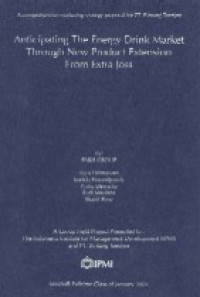
Integrated `Environmental Management System` (EMS) as Petroleum Industrys Strategic Plan in Indonesia a Technology and Business Review
| Gmd : Text
| Availability :
| 00000008647 | 140 | (GFP) | Available - Ada |
The de-regulated environmental decrees and statutes issued in 1993 have marked a change of project -sustainability-oriented trends in Indonesia. Implementation of Environmental Management and Monitoring System (EMS) has become a predominant thrust of the newly issued regulations, statutes, guidelines and procedures. Within the (upstream) oil and gas industry, the need to develop a simple, practical EMS for projects exempted from obligation to undergo Environmental Impact Assessment (EIA) has been practically viewed as mandatory. Despite the fact that EIA-based EMS documents, known as the 'UKL-UPL' or 'RKL-RPL'- as it is defined in the Act no.4/1982, are no longer required for 'preliminary petroleum project phases' such as seismic data acquisition and exploratory drilling activities, most principles utilized to develop and implement RKL-RPL continue to be applicable. Also, the commitment of Indonesian Government to adopt the ISO 14000's guidelines on Environmental Management, which will be in effect worldwide by 1997, is viewed as a significant factor.
Conceptually, recommendations on EMS for the industry in Indonesia include its systematic integration into the 're-engineered' upstream business lifecycle, i.e. from exploration (finding) phase to facilities demobilization phase (cleanup after abandonment), and structurally within an organization with the stronger commitment and directives from upper management.
Growing environmental issues such as effluent water discharge, drilling muds discharge, and their associated notion of applicable legislation and directives on toxic and hazardous waste and unused materials will not be discussed at a detailed level other than in the context of their technical and operational relevance to some recommended 'best-proven' operating practices highlighted in this paper.
This document presents the initial findings of a preliminary overview from the published and documented technological' 'best practices', throughout the upstream business lifecycle. Throughout the work-phases of geo mapping, potential geo surveys, seismic data acquisition, drilling, construction, development, production and abandonment, potential sensitivity of each type of technological practices toward producing environmental impacts was evaluated. Technological practices overviewed herein include: (a) Oil-based and Water-based Mud Treating and Control Facilities, (b) Underground Injection Control (of Drilling Mud Discharge and Produced Water), (c) Produced Water Treating Technologies, (d) Basic Waste Treating Technologies (Landfill, Incineration), (e) Basic Above Ground Storage Tanks's SPCC (Spill Prevention, Control and Countermeasures) and (f) Basic CRR (Clean Up, Restoration and Rehabilitation) measures for field facilities abandonment. Specific operating environments with higher ESI(Environmental Sensitivity Indices) have appropriately been considered in each technology evaluation, to secure the value of each alternative in light of the overall business and environmental management, including socio-economic-cultural benefits. Integrated EMS throughout industry's lifecycle will be outlined in accordance with its respective operating environments: offshore and/or onshore. Each lifecycle incorporates phases of geological/geophysical mapping and seismic data acquisition, exploratory drilling, construction, development, production operations and facilities abandonment. Rainforests, mangroves, Coral Reefs etc. are among the most sensitive operating environments which deserve much attention in this study.
Research Location: PERTAMINA
Supervisor: Prof. Dr. Wagiono Ismangil
Accepted: 1 December 1996
For IPMI Internal -- Read at Library Only.
| Series Title |
-
|
|---|---|
| Call Number |
140
|
| Publisher Place | Jakarta |
| Collation |
vi, 93p.: tabs. figs. apps.; 27 cm.
|
| Language |
English
|
| ISBN/ISSN |
-
|
| Classification |
-
|
| Media Type |
-
|
|---|---|
| Carrier Type |
-
|
| Edition |
-
|
| Subject(s) | |
| Specific Info |
-
|
| Statement |
-
|
| Content Type |
-
|
No other version available







